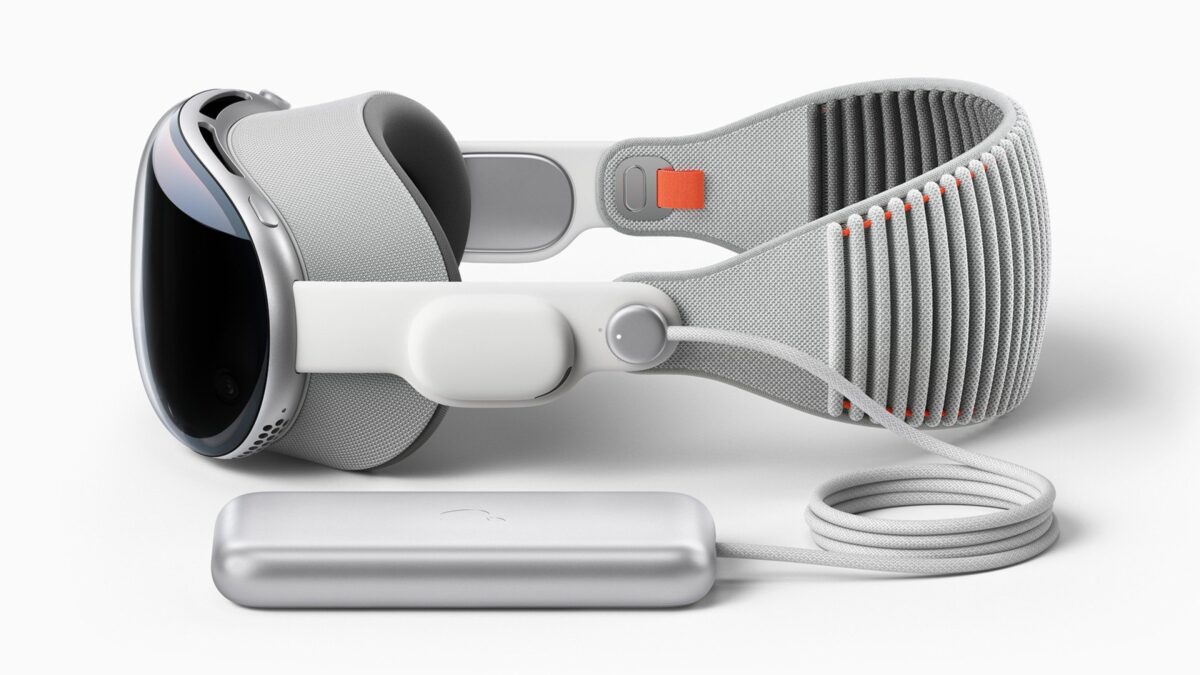
Can the Apple Vision Pro be a tool for content creators and filmmakers?
Virtual Reality, or VR, has been talked about as the next revolution of interaction and visual content. Sadly, only gaming has really embraced the format (and only somewhat), with narrative material following the same path as 3D.
It seems no one wants to wear a bulky headset.
But Apple’s latest innovation, the Apple Vision Pro, promises to revolutionize what VR and augmented reality can be.
The Vision Pro wasn’t introduced as an AR or VR headset, but a spatial computer seamlessly blends digital content with the physical world, offering users an infinite canvas that is an extension of the entire Apple ecosystem.
Creativity with Spatial Computing
The Apple Vision Pro introduces a fully three-dimensional user interface similar to a standard virtual reality experience. Not only can it function as a standalone unit with its own unique operating system (visionOS), but it can be an extension of your traditional desktop.
Apple claims the headset can reproduce true 4K displays in the virtual space. This means you can connect it to your new Mac Studio and Mac Pro (or MacBook) and set up a virtual monitor with your existing peripherals. For editors who want to experience a new way of cutting their films or content, a Vision Pro headset could be an interesting way to spice things up in the editing bay.
Unlike a traditional VR headset, Vision Pro is a combination of both augmented reality and virtual reality. Cameras and sensors on the outside keep track of your fingers and hand movements to allow control without the need for additional input devices. This also allows for video pass-through that works for both. While you can see the world around you, your eyes are displayed on the outside using a unique display approach that accurately maps your eyes to the headset.
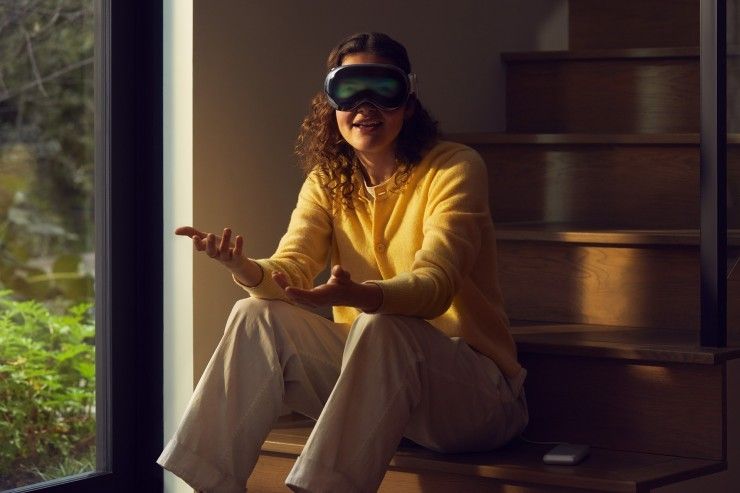
On the inside, eye tracking will be used in conjunction with hand gestures to control the user interface, and any key tracking information is hidden behind a similar layer of privacy, just like Face and Touch ID.
If you don’t want to see your room through the headset, you can dial in how much immersion you want. Literally. Users can switch between a full VR or AR space or a combination of both by using the Apple Watch-style dial on the side.
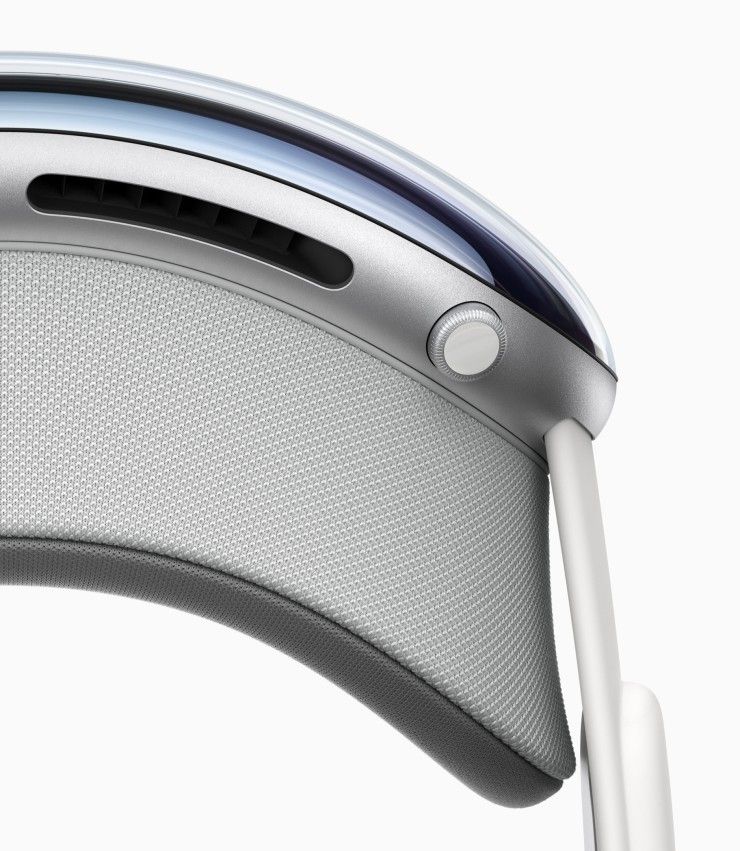
When in full VR mode, The two ultra-high-resolution displays (23 million pixels across for both) can create a 100-foot-wide screen that can be used to watch movies and TV shows or FaceTime your family. Or to edit. I’ve always wanted to edit my movie on a virtual IMAX screen.
For audio, the Spatial Audio system adds another layer of immersion, which matches the audio with the user’s surroundings. This is something that the Meta Quest 2 did really well, and I’m excited to see how Apple incorporates the tech.
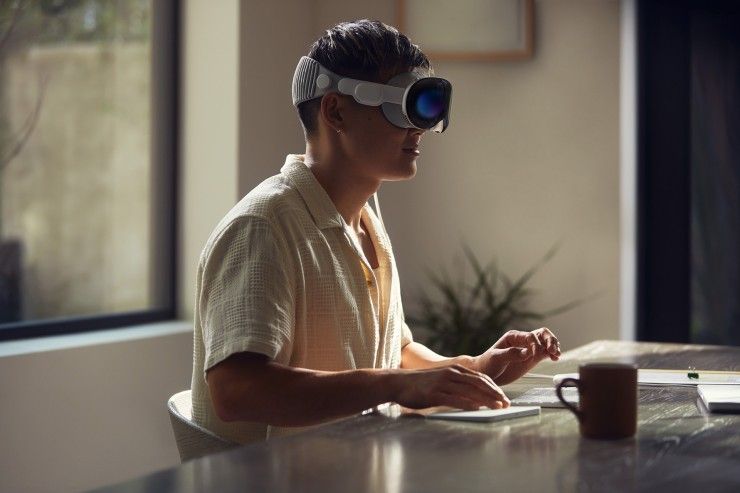
Collaboration and Communication
But the coolest thing I’ve seen so far from the reveal is how the Vision Pro will allow me to collaborate and communicate with family, colleagues, and friends.
During FaceTime calls, this device is able to reflect participants in life-size tiles. These will be digitally generated using Vision Pro’s sensor suite, creating a digital persona that mimics face and hand movements in real time. While Apple hopes this feature will be used for watching movies, browsing photos, or working on projects together, I can’t wait to collaborate with different departments on a shoot by walking around my home and casually sharing my windows and assets.
Hardware and Performance
This is all powered by two separate different Apple Silicon chips. One is the M2, which is incredibly capable on its own, and the other is the new R1 SoC. The new chip processes input from all of the 12 cameras, five sensors, and six microphones. Apple claims that the R1 can streams new images to the displays within 12 milliseconds, which is 8x faster than you can blink.
But he’s one catch, the battery is all external. While you can run the headset plugged in, you can take it with you on the road by using an external battery that plugs in via a cable. Apple claims the batter will last up to two hours, but since you can swap it out with a fresh one, a user could theoretically run it indefinitely. If they had enough batteries.
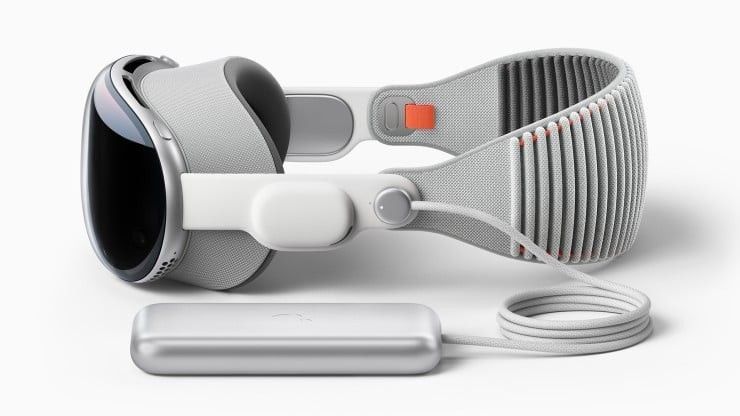
Do We Need This?
When I see the Vision Pro, I can’t help but be impressed by the refined technology Apple has created. But I also fail to see how I need this. However, I also thought the same thing about the iPad, and I use that thing almost every day for work and entertainment. Having used the HTC Vive, the Meta Quest, and currently owning the Quest 2, I’ve always wanted VR and AR technology to take off. But quality and limitations have always made it seem more like a gimmick than a tool.
How the Vision Pro will be utilized in the world, or if at all, remains to be seen.
At $3,499, the Vision Pro is a hefty investment that not everyone will be able to afford. But this is a new take on VR/AR tech that Apple is attempting to push into a future that’s not yet written.
We could wax poetic or throw shade on the Vision Pro all day, but we’ll never truly know how it’ll affect users in the long run. All we can do is hold on for the ride.














